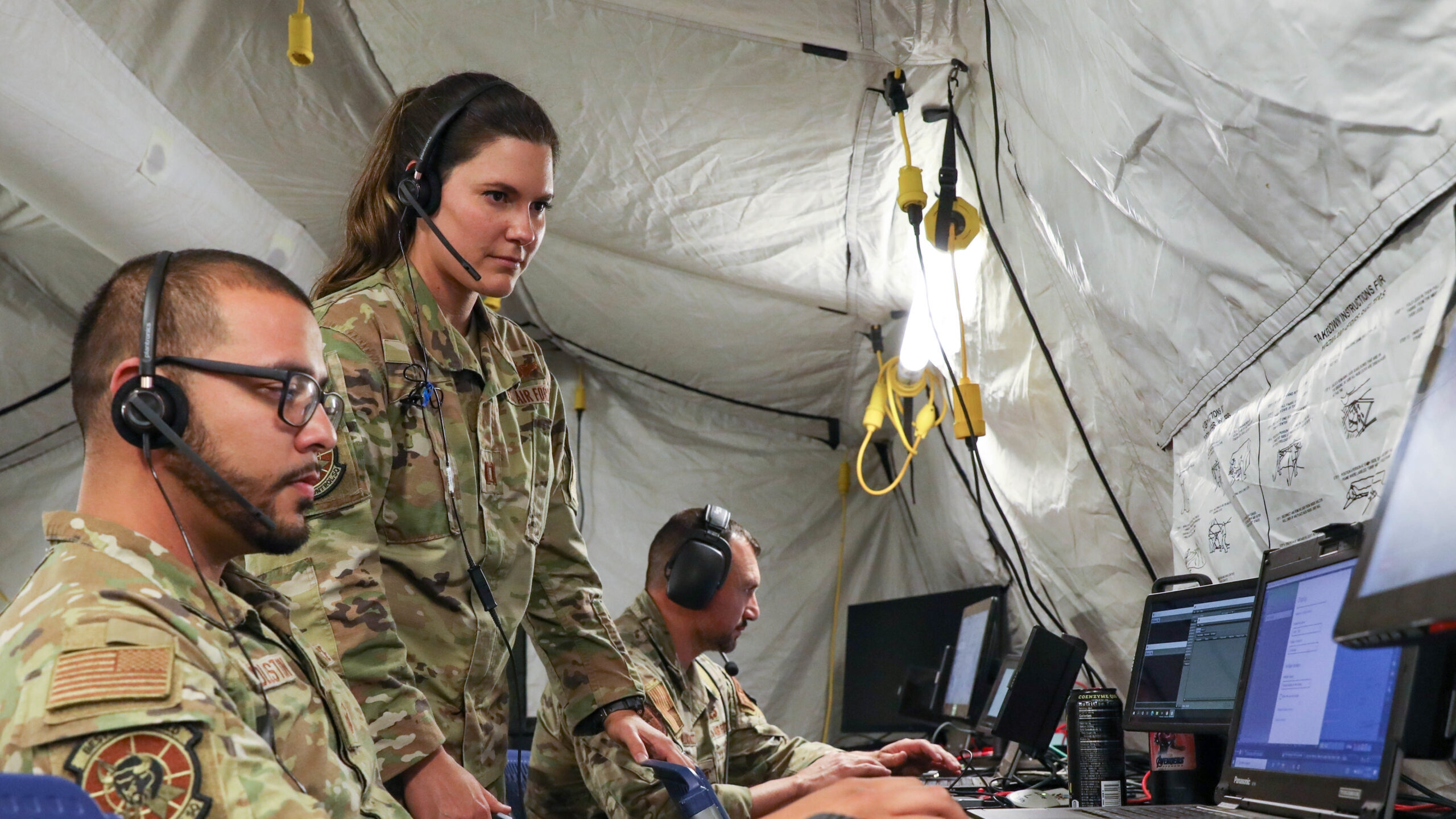
Military service members assigned to the 7th Air Support Operations Squadron, Fort Bliss, Texas, and 729th Air Control Squadron, Hill Air Force Base, Utah, conduct warfare operations at the Technical Operation Center-Lite at Project Convergence 22. (US Army photo by Spc. Brenda Salgado)
GLOBAL FORCE 2023 – Senior Army leaders have signed off on a new Project Convergence blueprint that will replace the once-a-year schedule centerpiece with a mix of persistent year-round experiments and larger capstone events thrown in, according to the three-star general leading the charge.
Word came earlier this year that the service would not be hosting Project Convergence in 2023, as part of a re-thinking of the effort. The kind of capstone, large-scale exercise previously held in the last three years will not return until the Spring of 2024, but when it does return, new ballistic missile defense tests are set to be folded in.
Convergence had previously been billed as an annual occasion to test out new weapons and reduce the amount of time between sensing a threat, targeting it and executing the launch sequence. Since the first event was held at Yuma Proving Ground, Ariz. in 2020, the service has hosted increasingly complicated scenarios with its sister services and foreign partners (the United Kingdom and Australia), but Army leaders have now determined this model is not ideal and changes are needed.
Lt. Gen. Scott McKean, the Army Futures Command’s deputy commanding general for futures and concepts, told Breaking Defense on Tuesday he has the green light to proceed with a mix of persistent experiments bolted onto larger exercises in the Indo-Pacific and European regions before the larger “Capstone 4” experiment, which will try and validate what has been learned.
“Those are smaller subsets of the overall challenges and so we’re continuing to try to learn on those specific subsets,” McKean said. “There may [also] be a new piece of equipment that comes in that wasn’t ready at PC, but we know it’s going to need to be integrated so we’ll go take it out to this exercise, and run it in a very small kind of environment, make sure that it’s good, right…. and [then] bring that down into this piece of the capstone.”
“Capstone 4 will take on a lot of the same challenges [as PC 2022] but…if we’ve learned and we’re ready to move to a higher level of complexity, we’re doing that,” he added.
Now under the revamped Project Convergence umbrella, the service wants to use upcoming exercises like Pacific Pathways to test out new capabilities and solve any data transfer or integration challenges it unearthed in previous tests. It will continue testing these out until it’s satisfied and then add in an extra level of complexity.
“At a tactical level at PC 2022, we really worked [on the] air and cruise missile threat, and we think we made pretty good progress there,” McKean said. “We want to now raise this threat to the operational level and actually integrate between our operational capabilities and our tactical ones.
“Operationally we’re starting to look at ballistic missiles now right, so you’re talking about higher altitudes, different capabilities and longer ranges,” he added. “You start bringing in different sensors… [and look at] can we now integrate those sensors, with the different shooters that can actually engage a ballistic missile?”
McKean did not disclose which ballistic missile defense assets would be used in the event but said the Army has seen how its new Integrated Battle Command System (IBCS) works at the tactical level and Capstone 4 will be the opportunity to see it work on the operational level.
“Here is an opportunity to see it at scale and make sure that you know, it’s doing what we want it to do,” he added.























